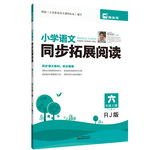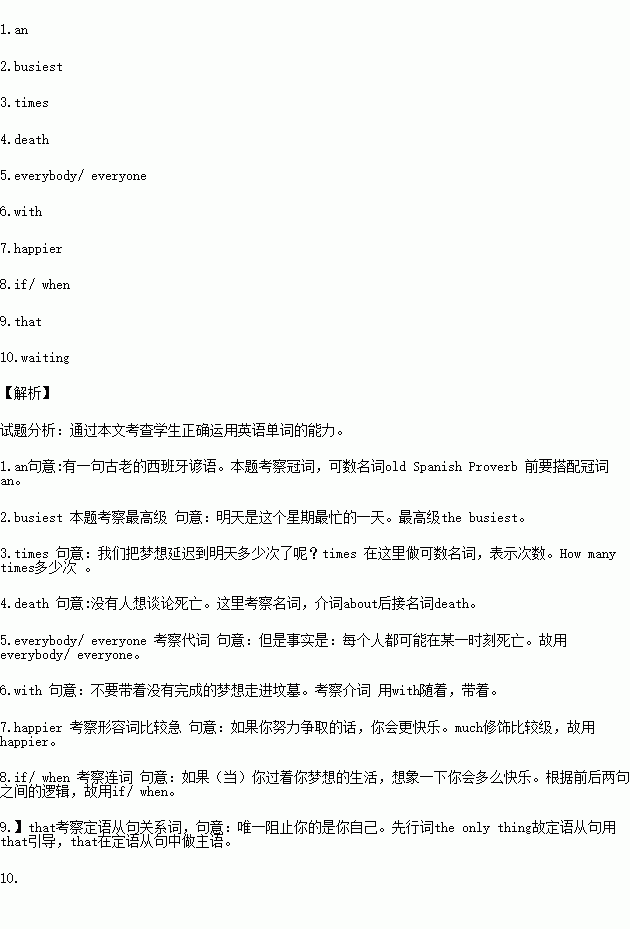题目内容
阅读下面材料,在空白处填入适当的内容(不多于3个单词)或括号内单词的正确形式。
There is 1. old Spanish Proverb which states, “Tomorrow is often the 2. (busy) day of the week”. How many 3. (time) have we put off our dreams until tomorrow? I’d say, too many. Our dreams should not, and cannot wait. We have to go for them now! Here are the reasons.
Tomorrow is not promised. Nobody likes to talk about 4. (dead), but the reality is—— 5. is going to die at one point. None of us know the day, or the hour. Therefore, today is all we have. Don’t go to your grave 6. unfulfilled dreams. Make the decision to go after every dream, big or small right now.
You’ll be much 7. (happy) if you go for it. Imagine how much happier you’ll be 8. you’re living the life you always dreamed about. The only thing 9. is stopping you is yourself. Take control of your own happiness. Don’t keep your dreams 10. (wait). Go after them today!
 口算心算速算应用题系列答案
口算心算速算应用题系列答案 同步拓展阅读系列答案
同步拓展阅读系列答案
